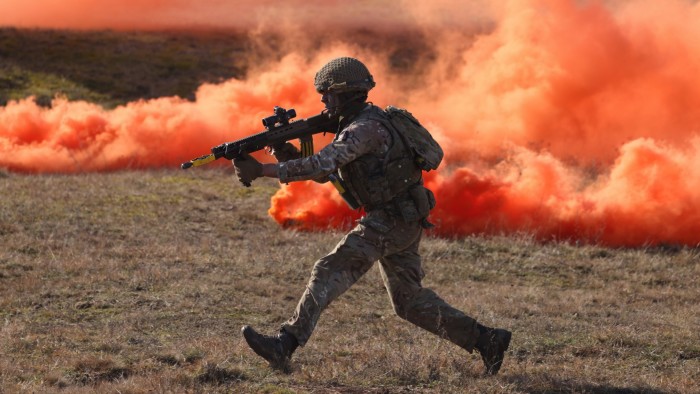Unlock the White House Watch newsletter for free
Your guide to what the 2024 US election means for Washington and the world
The writer is distinguished chair in Russia and Eurasia policy and a senior political scientist at the Rand Corporation
Despite all the differences between president-elect Donald Trump’s team and key European governments, both sides seem to agree on the merits of at least one policy: deploying a European force to Ukraine after the fighting there ends.
In a meeting with Ukrainian President Volodymyr Zelenskyy and France’s Emmanuel Macron last month, Trump reportedly said that European troops should be present in Ukraine to monitor any ceasefire. An anonymous member of his team put it more bluntly: “We are not sending American men and women to uphold peace in Ukraine . . . Get the Poles, Germans, British and French to do it.”
Given the likelihood of sharp disagreement between the Trump administration and Europe on issues ranging from trade to climate, this consensus might seem a cause for celebration. But the idea of putting European boots on the ground in Ukraine is deeply problematic.
For a start, there is significant confusion about what those boots would be meant to accomplish. One model for post-conflict troop deployment is a peacekeeping force, and there might well be a need for peacekeepers in Ukraine once a cessation of hostilities is agreed. But international organisations like the UN have a relative monopoly on peacekeeping for a reason: they are meant to be a neutral third party that can arbitrate disputes and be an honest broker. Given their extensive support for Ukraine, European states are anything but a neutral third party. Almost by definition, they could not lead a peacekeeping force in Ukraine.
A second model for boots on the ground is a tripwire force: troops deployed to deter potential aggression by demonstrating the commitment of the states that sent them. An aggressor would be forced to confront those troops in case of war, thus “tripping” the decision of their home countries to intervene. The classic example is the US-UK-French deployment in West Berlin during the cold war. Their presence made it clear that any Soviet aggression against West Berlin would have sparked a wider war.
In Ukraine, the commitment of key western states to the country’s security may well be necessary to deter a repeat of Russia’s full-scale invasion after a ceasefire is agreed. But European leaders appear to be putting the cart before the horse. They must first decide if in fact they are willing to commit to go to war with Russia if it invades again. Deploying a tripwire force before deciding what the “wire” would “trip” makes little sense.
Even if they were to make such a commitment, it would be premature to do so before broader talks on a settlement even begin. Negotiations between the warring parties — Russia and Ukraine — are likely to set the parameters of any post-conflict deployment in Ukraine, be they peacekeepers or a guarantor’s forces. Given what we know about Moscow’s priorities the last time the two were negotiating in earnest in spring 2022, the Kremlin is likely to demand that Ukraine give a commitment not to host foreign forces on its territory as part of any settlement.
Indeed, keeping Nato forces and infrastructure out of Ukraine has been a key Russian objective for decades. European leaders should consider whether discussion of such a post-conflict deployment now will incentivise Russia to keep fighting. After all, a ceasefire would be the prerequisite for sending those boots to Ukrainian ground in the first place.
The incoming Trump administration has been supportive of this European initiative. It is consistent with the president-elect’s stated desire to disengage the US from security matters on the continent, and instead have the EU and the UK take the lead. But a deployment of European forces to Ukraine will inevitably entangle the Americans. European militaries depend on their US allies for out-of-area operations. Inevitably, a large deployment to Ukraine will once again expose this dependency when they turn to the US for help with critical tasks such as air lift, logistics and intelligence that they cannot conduct alone.
Perhaps most importantly, if Russia were to violate a ceasefire and attack this European force, the pressure for Washington to intervene would be overwhelming. A shooting war between Russia and US allies in Europe in which the Americans sat on the sidelines is difficult to imagine. And if that were to happen, the blow to Nato’s credibility would probably be fatal. Leaders on both sides of the Atlantic should think twice before they potentially put the alliance in such an untenable position.



